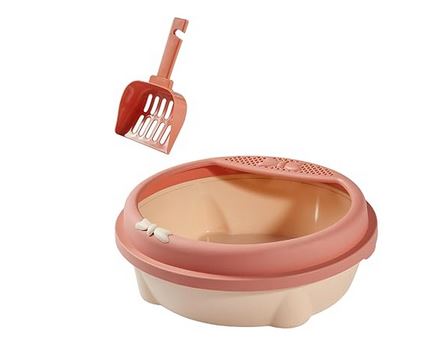How To Litter Train a Kitten: Training a kitten to use a litter box involves teaching them when and where to eliminate. This can be done when your kitten is about 3 to 4 weeks old, marking the beginning of most kittens‘ ability to gain control over their bladder and bowels. Choose a shallow–litter–box design with low sides for easy access. Use non-clumping, unscented litter because kittens may become irritated by strong fragrances or dust from litter.
Place the box in a quiet, accessible spot. Gently place your kitten in the box after meals, playtime, and naps to encourage use. Be patient, and clean the box regularly to maintain hygiene. Most kittens will naturally adapt with consistent guidance.
When should you begin litter training your kittens?
Kittens usually start litter training at around 4 weeks of age, which is the time they begin to wean. Before that, the mother cats instinctively stimulate their kittens to urinate/defecate, and no litter box is necessary. At 4 weeks of age, you can start introducing a kitten-friendly litter box to help them develop good habits.
When taking in an older kitten or adult cat, you can begin litter training right away. Place the litter box in a clean, quiet, safe area and make sure it’s available to your kitten at all times. A little patience and consistencies are generally all it takes for kittens to learn to use the litter box.
How To Litter Train a Kitten : Litter Training Your Kitten
Litter training your kitten is a major part of helping them become good indoor cats. Patience and consistency are all you need to make your kitten learn to use the litter box without much ado. Let’s get started with the steps here:
1. Choosing the Right Litter Box
The size and type of litter box can make a difference for your kitten. A small tray of about 13 inches by 9 inches is perfect for a young kitten-it is not very intimidating. As your kitten grows, you can size up to a larger box. It is a good rule of thumb to have one more litter box than the number of cats in the house. For instance, if you have two cats, you should have three litter boxes.
Covered OR Uncovered Boxes
Kittens will like either open boxes or covered boxes. Cats prefer an open box for the safety and simple exit it provides rather than a covered one for entrapment. But some cats like covered boxes for the privacy. At any rate, one should provide both and leave it to the kitten’s choice of what it prefers.
2. Use Appropriate Litter Type
Kittens generally prefer fine-grain litter because it feels softer under their paws. You’ll need to test out different types, such as clumping or non-clumping, to see which one your kitten prefers. While clumping litter is often more convenient for cleaning, kittens may take time to adjust to it. Pay attention to their comfort level and adjust accordingly.
3. Strategically Place the Litter Boxes
Where you locate the litter boxes will impact your kitten’s ability to learn.
Here are a few tips for optimal placement:
- Spread out the boxes so that your kitten can’t mistake them for one large box.
- Do not hide the boxes in dark, hidden corners or closets. Cats prefer areas that are easily accessible and visible.
- Ensure there’s light around the boxes. While cats can see in dim light, it’s important they’re not in complete darkness when using the box.
- Reduce distractions. Place the boxes in quiet, low-traffic areas
- Have one on every floor of your home. Cats don’t like to walk long distances to find their litter box.
4. Introduce Your Kitten to the Litter Box
Place your kitten gently in the litter box after feeding time, naps, and play. Let him explore it on his own. If he still doesn’t use it, don’t worry, as he needs practice to get the hang of it. Continue placing him in the litter box.
5. Reward Good Behavior
Immediately reward your kitten with a treat when they successfully use the litter box to reinforce the behavior. In this way, positive reinforcement will let them associate the litter box with something pleasant.
6. Keep the Litter Box Clean
Regular cleaning will keep your kitten’s litter box welcoming. Scoop the litter every use to prevent pungent smell from accumulating. Maintain the litter depth 2 to 3 inches, and give it more litter if it gets low. Clean the litter box thoroughly every week for hygienic purposes.
More Information:
- Patience is the Key: Toilet training might take time. Do not punish your kitten for accidents, but calmly clean the place with an enzymatic cleaner so that the smell would not continue.
- Consistency: Continue to keep the routine consistent, putting the kitten in the litter at regular intervals.
By providing the right environment, litter box options, and consistent positive reinforcement, your kitten will quickly learn to use the litter box, leading to a happier and cleaner home.
like
litter box for kittens

This Semi-Enclosed Cat Litter Box is made from premium, durable PP material, ensuring long-lasting use. It features high sides to prevent litter spills and a semi-enclosed design for better air circulation and comfort for your cat.
The open top provides easy access, while the included scoop makes cleaning quick and efficient. The detachable design allows for hassle-free cleaning with just water.
Available in two sizes: Small (13.78\” x 12.99\” x 5.51″) and Large (15.94\” x 14.57″ x 6.30″). Maintain a clean, cozy litter area for your cat.


